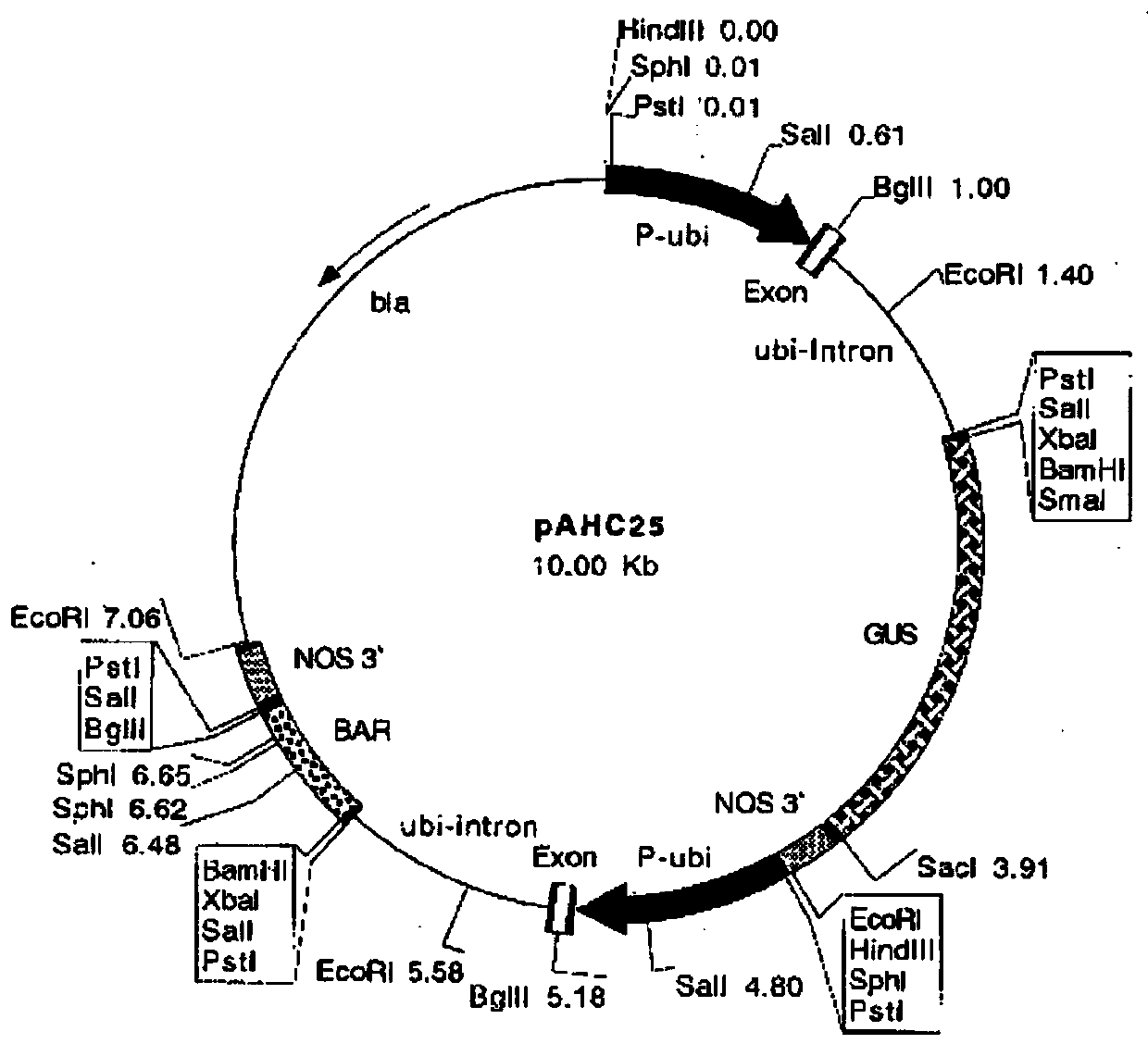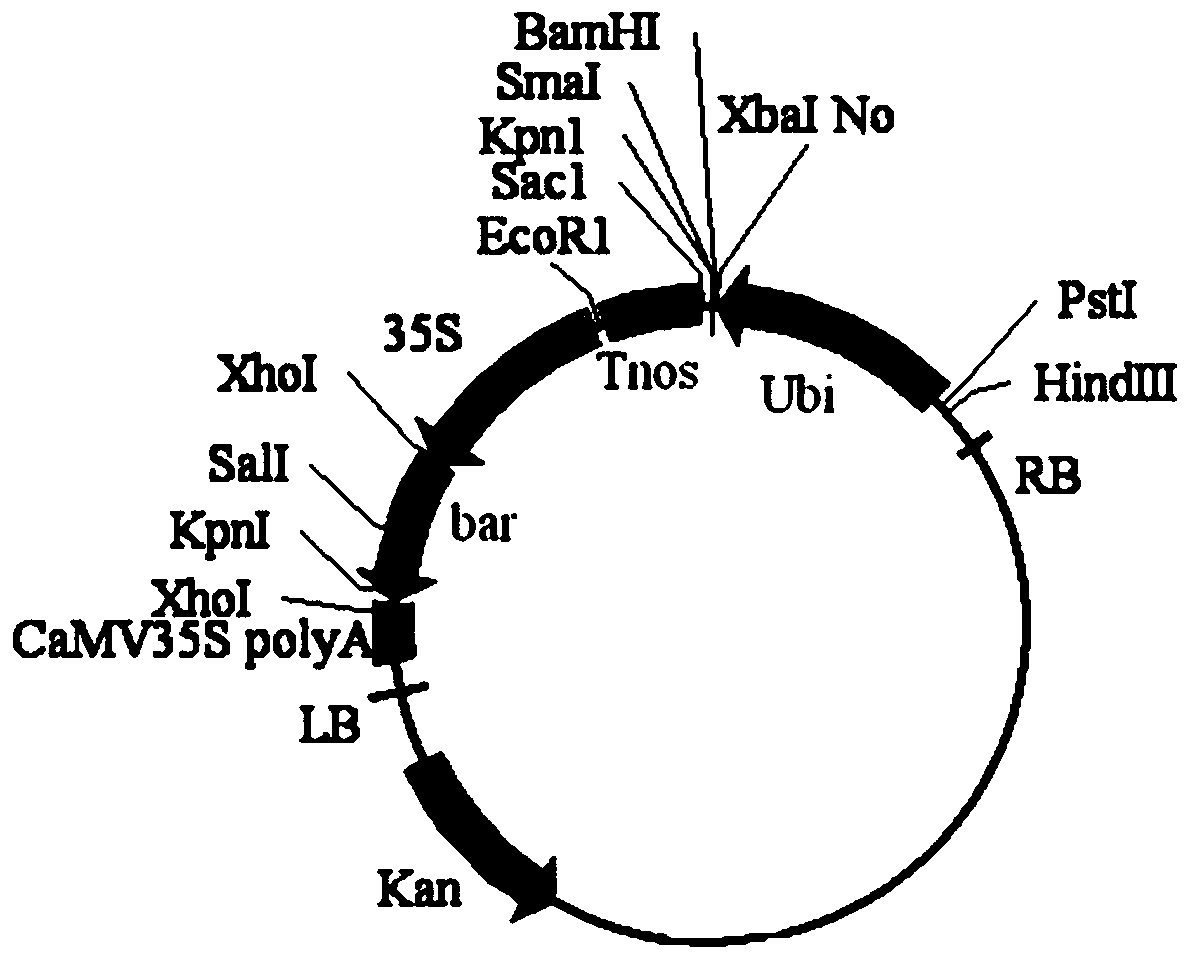Application of wheat TaMADS6 gene in regulation of plant spike and grain development as well as flowering time
A flowering time and plant technology, applied in the field of plant molecular biology, can solve problems such as few reports on wheat function research and production application research, and achieve the effects of increasing the number of cob ears, delaying flowering time, and high application value.
- Summary
- Abstract
- Description
- Claims
- Application Information
AI Technical Summary
Problems solved by technology
Method used
Image
Examples
Embodiment 1
[0047] Example 1 Construction of pAHC25-6*MYC-TaMADS6-D intermediate vector
[0048] To construct the overexpression vector of the wheat TaMADS6-D gene, first connect the TaMADS6-D gene to the pAHC25-6*MYC vector (pAHC25-6*MYC is a vector transformed by pAHC25, replace the GUS sequence in pAHC25 with 6*MYC Sequence, the plasmid map of pAHC25 as figure 1 shown), construct the intermediate vector pAHC25-6*MYC-TaMADS6-D, the specific method is as follows:
[0049] (1) Use primers with sequences such as SEQ ID NO.7 and SEQ ID NO.8 to amplify the TaMADS6-D fragment with Spe I and Sac I restriction sites using the cDNA of wheat tissue as a template, and use gel to recover The kit recovers the target fragment;
[0050] (2) double-enzyme digestion of pAHC25-6*MYC and the purified product in step (1), and recovery of the linearized vector and target fragment using a gel recovery kit;
[0051] (3) Ligation: The reaction system is: 2 μL of target fragment, 2 μL of linearized vector, 1...
Embodiment 2
[0053] Example 2 Construction of pCAMBIA3300-Ubi-MCS-6*MYC-TaMADS6-D overexpression vector
[0054] The overexpression vector used to overexpress the TaMADS6-D gene in wheat is pCAMBIA3300-UbiMCS (transformed with the pCAMBIA3300 vector as the backbone, and the Ubiquition promoter of corn is added before the multiple cloning site, and the herbicide-resistant Bar gene is driven by the 35s promoter , graph such as figure 2 shown).
[0055] Use the primer shown in SEQ ID NO.9 and SEQ ID NO.10 (the primer shown in SEQ ID NO.9 has a BamH I restriction site, and the primer shown in SEQ ID NO.10 has a Sma I restriction site;) from the pAHC25-6*MYC-TaMADS6-D intermediate vector constructed in Example 1, amplify the fusion gene fragment with 6*MYC and TaMADS6-D gene fragment, i.e. 6*MYC-TaMADS6 -D.
[0056] Digestion, ligation, transformation, and positive clone sequencing are the same as steps (2) to (4) of Example 1. The sequencing primers are SEQ ID NO.11 and SEQ ID NO.12. 6*MY...
Embodiment 3
[0057] Example 3 Construction of transgenic wheat overexpressing TaMADS6-D gene
[0058] 1. Transformation of TaMADS6-D gene overexpression vector into Agrobacterium
[0059] (1) Take out Agrobacterium competent C58C1 from -80°C refrigerator and melt on ice;
[0060] (2) Divide each competent tube into two tubes, add 2 μL pCAMBIA3300-Ubi-MCS-6*MYC-TaMADS6-D plasmid, flick and mix well, and place on ice for 30 minutes;
[0061] (3) Liquid nitrogen for 5 minutes;
[0062] (4) 37°C water bath for 5 minutes;
[0063] (5) 5 minutes on ice;
[0064] (6) In a clean bench, add 400 μL of anti-antibiotic-free LB medium to each tube, flick and mix evenly, 28°C, 200 r / min, and shake for 3-4 hours;
[0065] (7) The bacterial solution was applied to the solid plate containing Rif and Kan, sealed with a parafilm, and cultured upside down in an incubator at 28°C for 2 days;
[0066] (8) pick single clones in LB medium (containing Rif and carrier-resistant antibiotics), shake culture at 2...
PUM
 Login to View More
Login to View More Abstract
Description
Claims
Application Information
 Login to View More
Login to View More - R&D
- Intellectual Property
- Life Sciences
- Materials
- Tech Scout
- Unparalleled Data Quality
- Higher Quality Content
- 60% Fewer Hallucinations
Browse by: Latest US Patents, China's latest patents, Technical Efficacy Thesaurus, Application Domain, Technology Topic, Popular Technical Reports.
© 2025 PatSnap. All rights reserved.Legal|Privacy policy|Modern Slavery Act Transparency Statement|Sitemap|About US| Contact US: help@patsnap.com



